�
Preface
Copyright
This publication, including all photographs, illustrations and software, is protected
under international copyright laws, with all rights reserved. Neither this manual, nor
any of the material contained herein, may be reproduced without written consent of
the author.
Version 1.0C
Disclaimer
The information in this document is subject to change without notice. The manufac-
turer makes no representations or warranties with respect to the contents hereof and
specifically disclaims any implied warranties of merchantability or fitness for any
particular purpose. The manufacturer reserves the right to revise this publication and
to make changes from time to time in the content hereof without obligation of the
manufacturer to notify any person of such revision or changes.
Trademark Recognition
Microsoft, MS-DOS and Windows are registered trademarks of Microsoft Corp.
AMD, Phenom, Athlon, Sempron and Duron are registered trademarks of AMD
Corporation.
Other product names used in this manual are the properties of their respective owners
and are acknowledged.
Federal Communications Commission (FCC)
This equipment has been tested and found to comply with the limits for a Class B
digital device, pursuant to Part 15 of the FCC Rules. These limits are designed to
provide reasonable protection against harmful interference in a residential installa-
tion. This equipment generates, uses, and can radiate radio frequency energy and, if
not installed and used in accordance with the instructions, may cause harmful inter-
ference to radio communications. However, there is no guarantee that interference
will not occur in a particular installation. If this equipment does cause harmful
interference to radio or television reception, which can be determined by turning the
equipment off and on, the user is encouraged to try to correct the interference by one
or more of the following measures:
•
•
•
•
Reorient or relocate the receiving antenna
Increase the separation between the equipment and the receiver
Connect the equipment onto an outlet on a circuit different from that to
which the receiver is connected
Consult the dealer or an experienced radio/TV technician for help
Shielded interconnect cables and a shielded AC power cable must be employed with
this equipment to ensure compliance with the pertinent RF emission limits governing
this device. Changes or modifications not expressly approved by the system’s manu-
facturer could void the user’s authority to operate the equipment.
Preface
�
ii
Declaration of Conformity
This device complies with part 15 of the FCC rules. Operation is subject to the
following conditions:
•
•
This device may not cause harmful interference, and
This device must accept any interference received, including interfer-
ence that may cause undesired operation
Canadian Department of Communications
This class B digital apparatus meets all requirements of the Canadian Interference-
causing Equipment Regulations.
Cet appareil numérique de la classe B respecte toutes les exigences du Réglement sur
le matériel brouilieur du Canada.
About the Manual
The manual consists of the following:
Chapter 1
Introducing the Motherboard
Chapter 2
Installing the Motherboard
Chapter 3
Using BIOS
Describes features of the
motherboard.
Go to page 1
Describes installation of
motherboard components.
Go to page 7
Provides information on us-
ing the BIOS Setup Utility.
page 27
Go to
Chapter 4
Using the Motherboard Software
Chapter 5
Setting Up NVIDIA RAID Configuration
Chapter 6
NVIDIA®®®®® Hybrid SLI®®®®® Technology Support
Preface
Describes the motherboard
software
Go to page 43
Provides information about
SATA RAID Setup
Go to page 49
Provides information about
Hybrid SLI technology
Go to page 59
�
iii
TTTTTABLE OF CONTENTS
ABLE OF CONTENTS
ABLE OF CONTENTS
ABLE OF CONTENTS
ABLE OF CONTENTS
Preface
i
Chapter 1
Introducing the Motherboard
1
1
Introduction......................................................................................1
Feature ..............................................................................................2
Motherboard Components.............................................................4
7 7 7 7 7
Chapter 2
Installing the Motherboard 7
Safety Precautions...........................................................................7
Choosing a Computer Case............................................................7
Installing the Motherboard in a Case...............................................7
Checking Jumper Settings...............................................................8
Setting Jumpers...................................................................8
Checking Jumper Settings...................................................9
Jumper Settings...................................................................9
Installing Hardware.........................................................................10
Installing the Processor.....................................................10
Installing Memory Modules..............................................11
Expansion Slots.................................................................16
Connecting Optional Devices............................................18
Installing a Hard Disk Drive/CD-ROM/SATA Hard Drive..21
Installing a Floppy Diskette Drive....................................22
Connecting I/O Devices................................................................23
Connecting Case Components......................................................24
Front Panel Header............................................................26
Chapter 3
Using BIOS
27
27
About the Setup Utility................................................................ 27
The Standard Configuration..............................................27
Entering the Setup Utility...................................................27
Using BIOS..................................................................................28
BIOS Navigation Keys......................................................28
Standard CMOS Setup......................................................29
Advanced Setup.................................................................31
Advanced Chipset Setup....................................................32
�
iv
Integrated Peripherals.......................................................33
Power Management Setup..................................................34
PCI/PNP Setup...................................................................36
PC Health Status................................................................36
Frequency/Voltage Control................................................38
Load Default Settings.........................................................39
Supervisor Password.........................................................39
User Password...................................................................40
Save & Exit Setup...............................................................40
Exit Without Saving............................................................40
Updating the BIOS.............................................................41
Chapter 4
Using the Motherboard Software
43 43 43 43 43
43
About the Software CD-ROM......................................................43
Auto-installing under Windows XP/Vista..................................43
Running Setup....................................................................44
Manual Installation........................................................................48
Utility Software Reference.............................................................48
Chapter 5
Setting Up NVIDIA RAID Configuration
49 49 49 49 49
49
Setting Up a Non-Bootable RAID Array.....................................49
Setting Up a Bootable RAID Array..............................................51
Chapter 6
NVIDIA®®®®® Hybrid SLI®®®®® Technology Support
59 59 59 59 59
59
Key Features...................................................................................59
Hybrid SLI Products......................................................................60
Hybrid Requirements and Constraints.......................................61
Installation and Use.......................................................................62
�
1
Chapter 1
Introducing the Motherboard
Introduction
Thank you for choosing this motherboard. This motherboard is a high performance,
enhanced function motherboard that supports socket for AMD PhenomTM processor
(socket AM2+)/AMD AthlonTM 64 X2 Dual-Core/AthlonTM 64/SempronTM proces-
sors for high-end business or personal desktop markets.
This motherboard is based on NVIDIA® GeForce8100 (MCP78V) Premium media
and communications processor (MCP) for best desktop platform solution.
GeForce8100 is a single-chip, highly integrated, high performance HyperTransport
peripheral controller, unmatched by any other single chip-device controller. The
memory controller supports DDR2 memory DIMM frequencies of 1066*1 (AM2+)/
800/667/533/400. It supports four DDR2 sockets with maximum memory size of 32
GB*2. High resolution graphics via one PCI Express x16 slot, two PCI Express x1
slots, 12 USB 2.0 ports (6 USB ports and 3 USB 2.0 headers support additional 6 USB
ports) and SATA support with RAID function.
There is an advanced full set of I/O ports in the rear panel, including PS/2 mouse and
keyboard connectors, six USB ports, one LAN port and audio jacks for microphone,
line-in and 6/8-ch (optional) line-out. This motherboard is designed in an ATX form
factor using a four-layer printed circuit board and measures 305 mm x 220 mm.
*
1. Due to the limitation of AMD CPU spec, please refer to Memory QVL
for more information.
2. Due to the DRAM maximum size (2 GB per dimm) at present, the
memory maximum size we have tested is 8 GB.
Introducing the Motherboard
�
2
Feature
Processor
This motherboard uses a socket AM2+/AM2 that carries the following features:
Accommodates AMD PhenomTM processor (socket AM2+)
AMD AthlonTM 64 X2 Dual-Core/AthlonTM 64/SempronTM processors
Supports HyperTransportTM (HT) 3.0 interface speeds
•
•
HyperTransportTM Technology is a point-to-point link between two devices, it
enables integrated circuits to exchange information at much higher speeds than
currently available interconnect technologies.
This board supports CPU up to 95W TDP only.
Chipset
The NVIDIA® GeForce8100 is a single-chip with proven reliability and perfor-
mance.
•
•
•
•
•
•
•
•
•
HyperTransport 3.0 x16 up and down links to the AMD socket AM2+/
AM2 CPU
PCI Express 16-lane link interface for external graphics processors
PCI Express Generation 2.0 compatible
Compliant with PCI v2.3 interface at 33 MHz
Integrated SATA 3.0 Gb/s Host Controller
Twelve USB 2.0 ports supported
Fast ATA-133 IDE controller
NVIDIA® MediaShieldTM RAID with support for RAID 0, RAID 1, RAID 0+1,
RAID 5, and JBOD
Integrated Hybrid SLI technology, NVIDIA® UltraShadowTM technology,
full NVIDIA® nView® multi-display technology capability
Memory
•
•
•
Supports DDR2 1066 (AM2+)/800/667/533/400 DDR2 SDRAM with Dual-
channel architecture
Accommodates four unbuffered DIMMs
Up to 8 GB per DIMM with maximum memory size up to 32 GB*
Audio (Optional)
The onboard Audio provides either of the following features:
•
•
•
•
•
•
•
•
•
•
5.1 Channel High Definition Audio Codec
DACs Support 96K/48K/44.1KHz DAC sample rate
Power support: Digital:3.3V; Analog:5.0V
WOWTM and Tru SurroundTM from SRS
Provides single ended CD input with DRM solutions and legacy
OS issues
7.1 Channel High Definition Audio Codec
SPDIF In/Out supports 96K/48K/44.1KHz plus SPDIF OUT sup-
ports 88.2 KHz
Power support: Digital:3.3V; Analog:5.0V
MAxx PlayerTM from Waves
Provides single ended CD input with DRM solutions and legacy
OS issues
Introducing the Motherboard
�
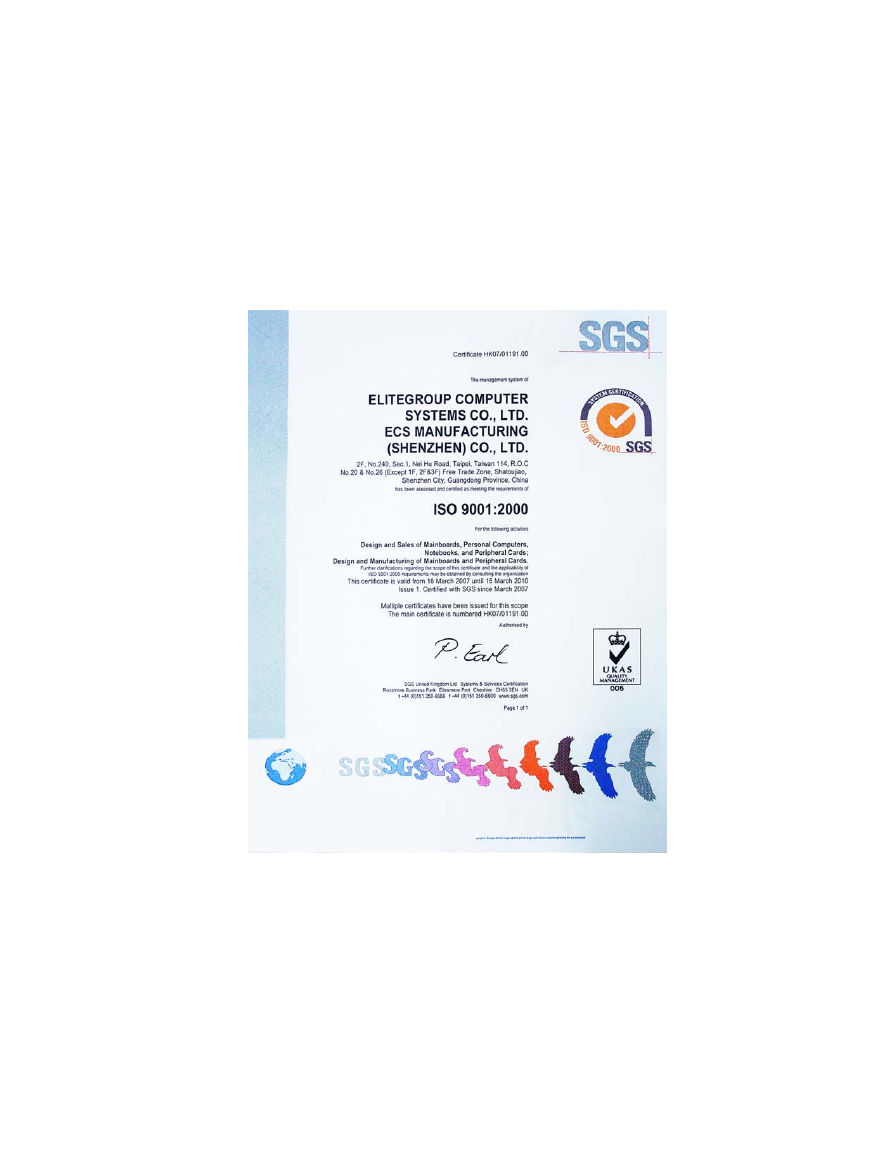
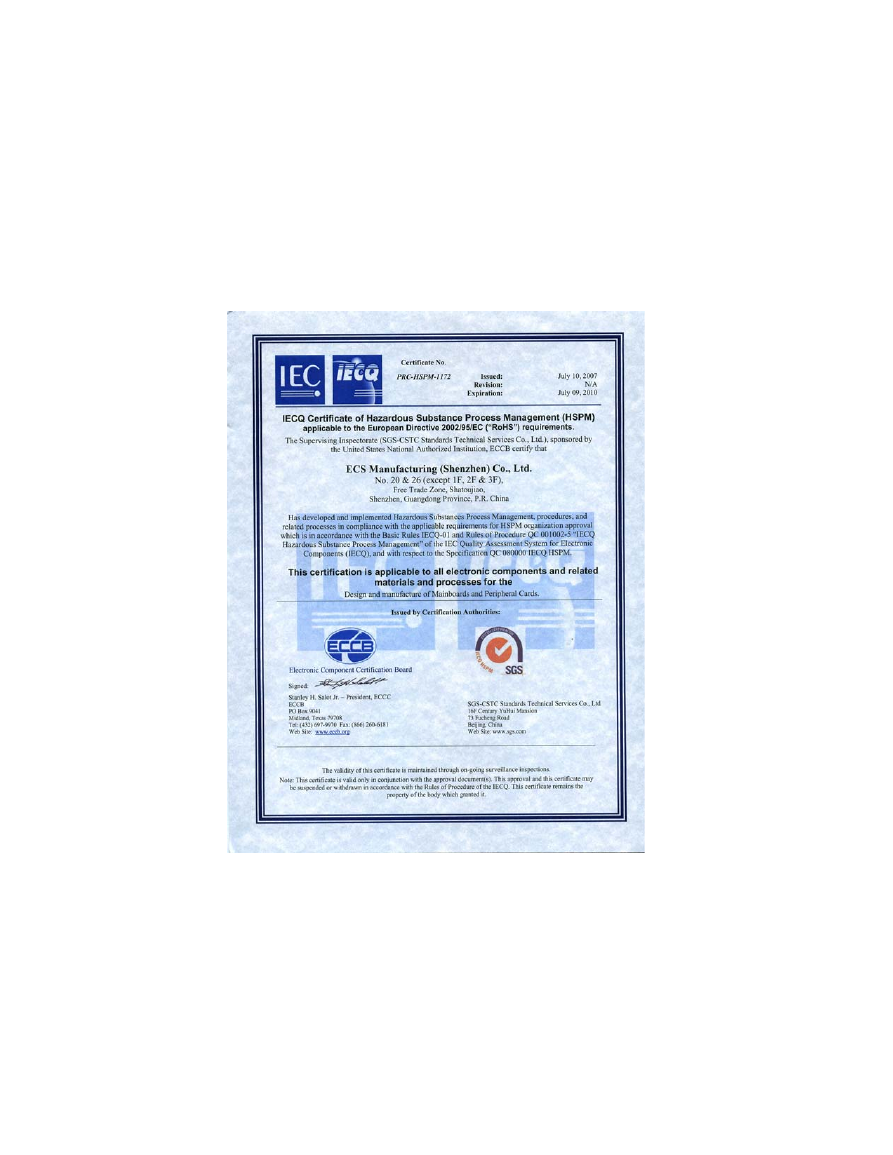
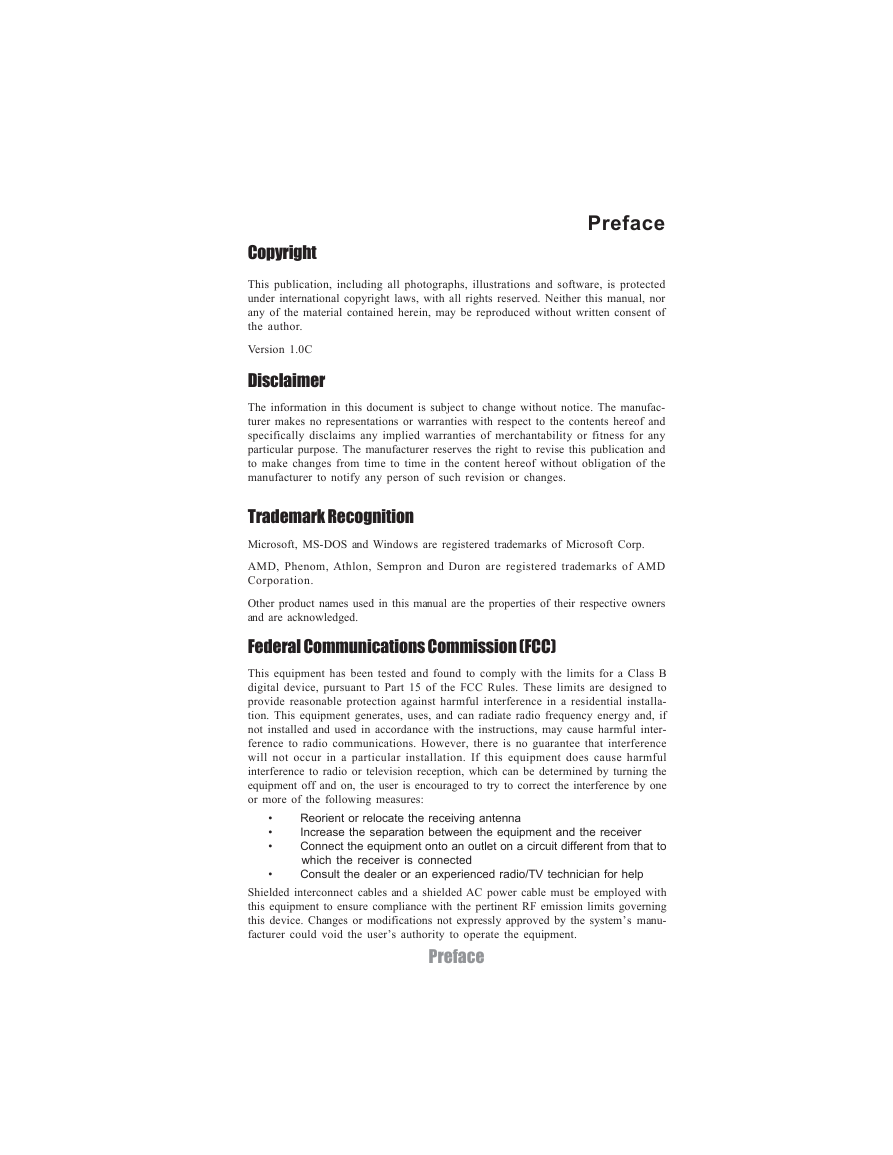
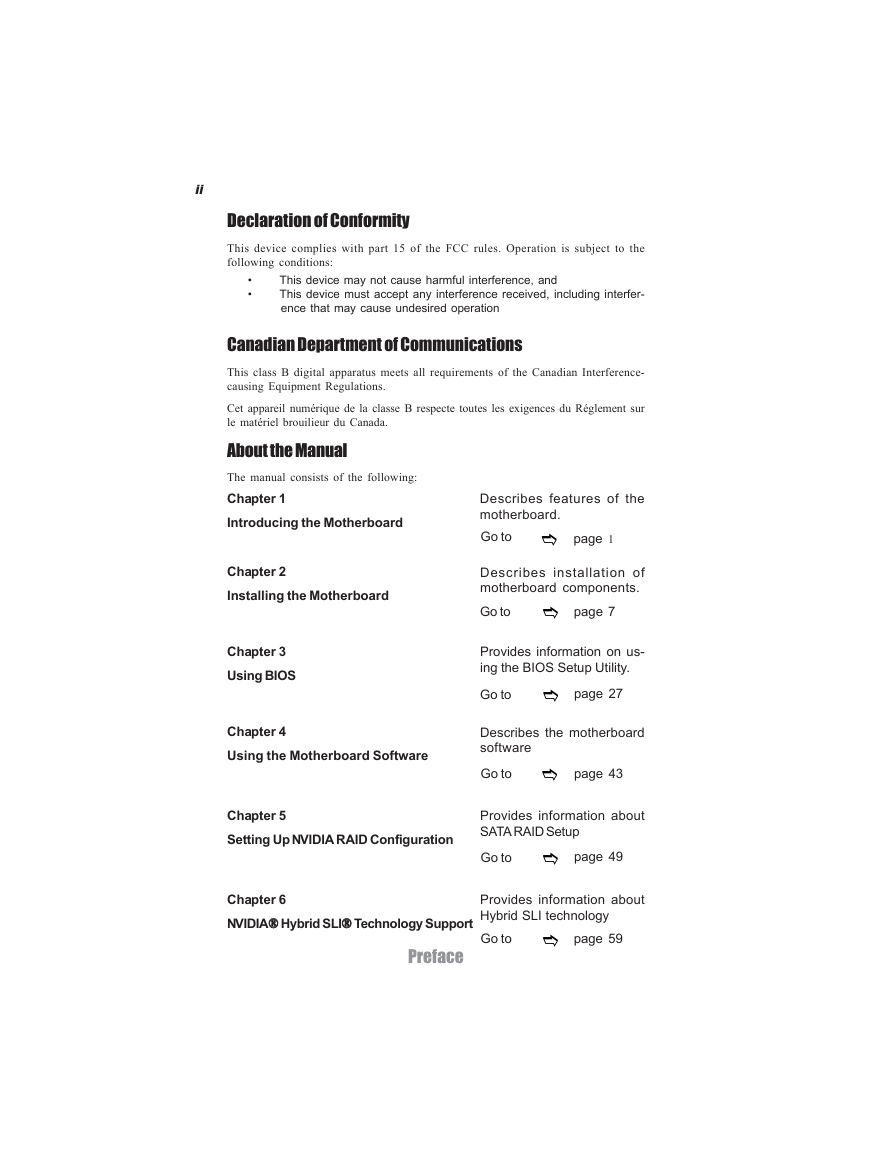
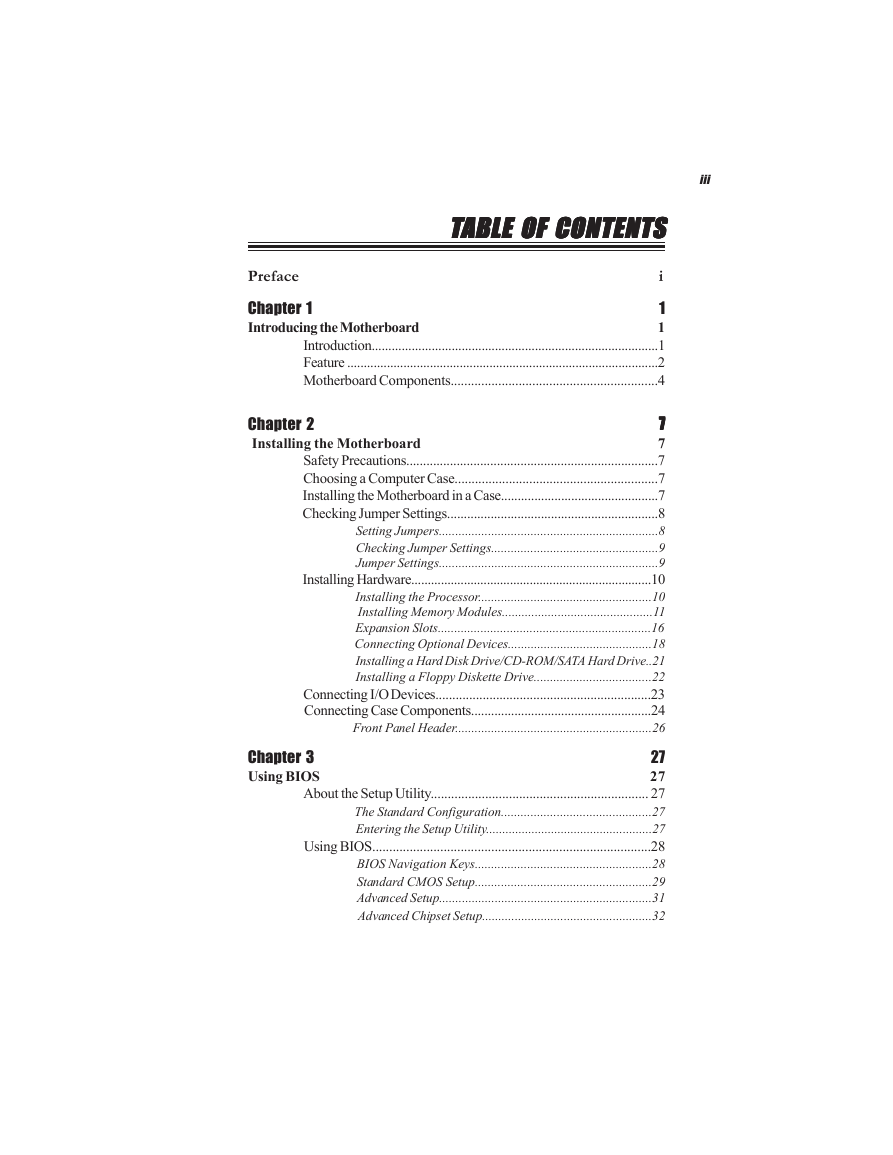
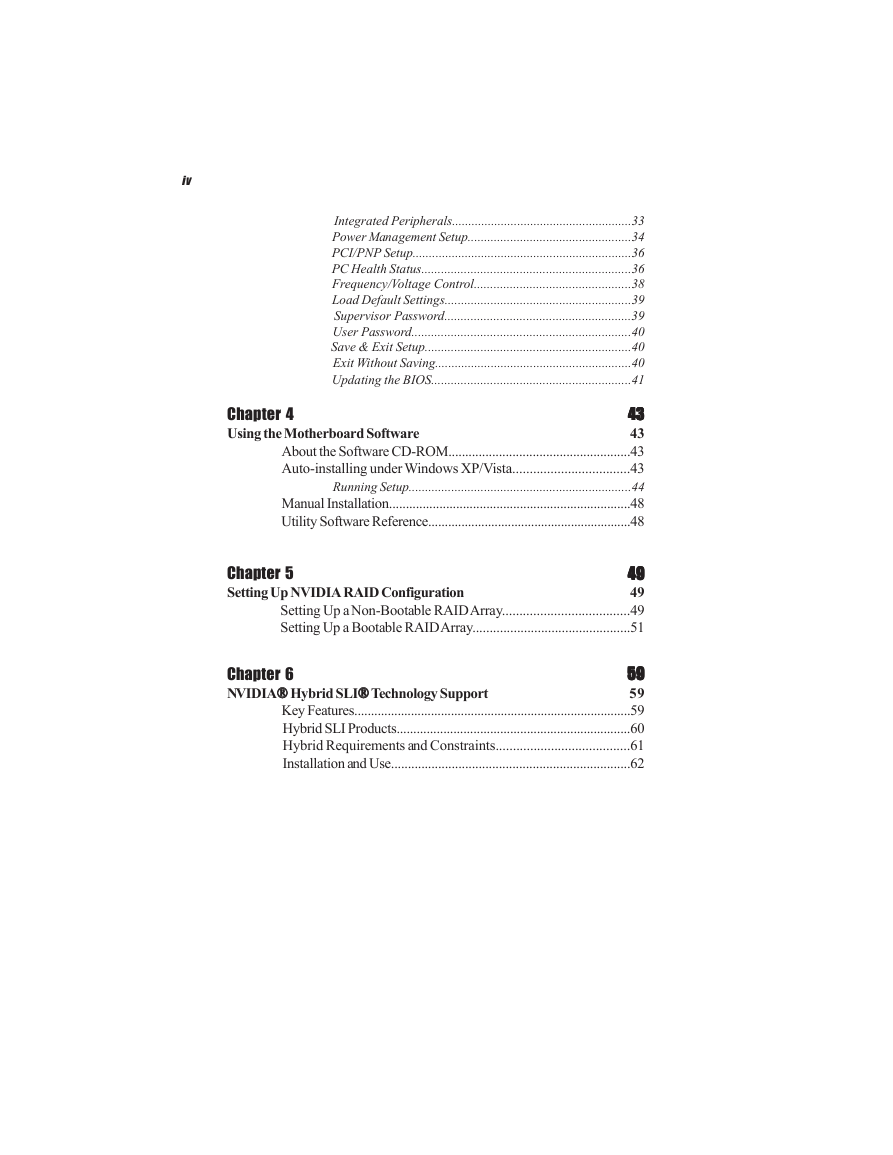
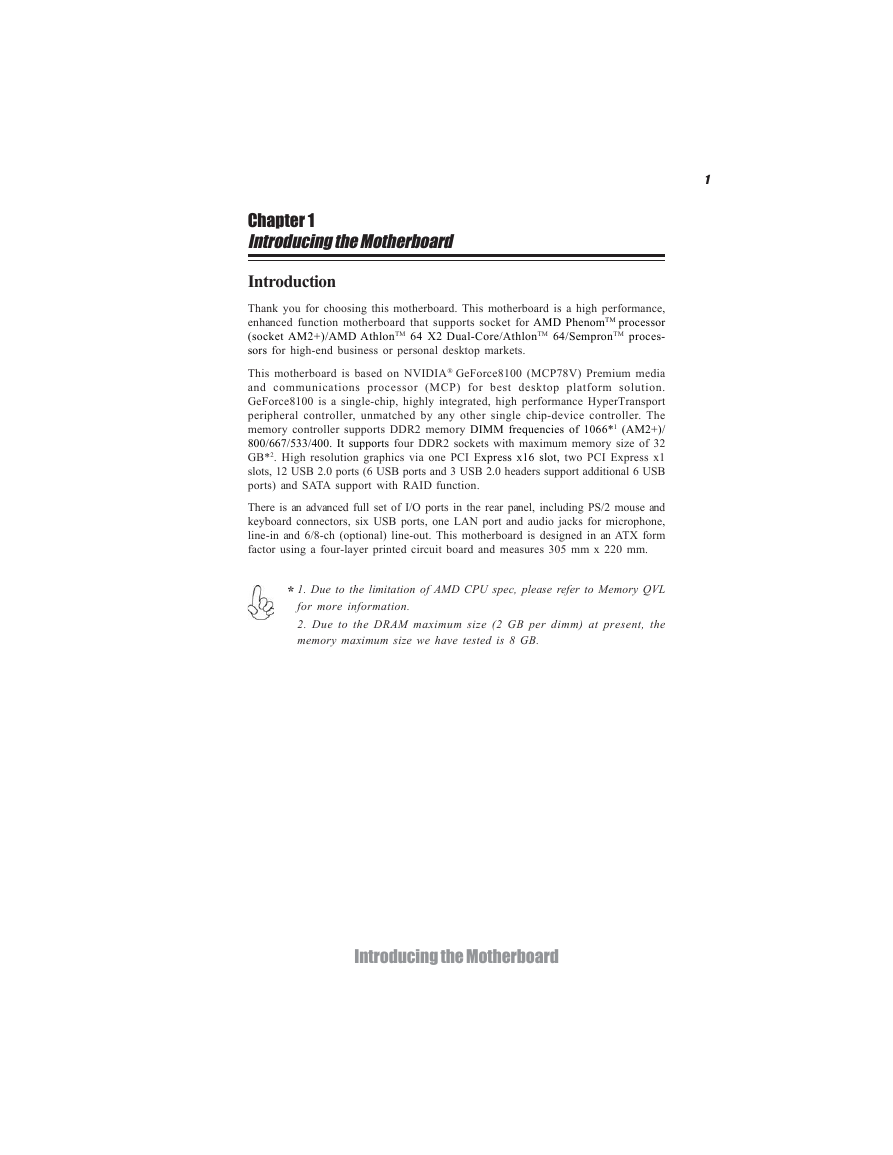
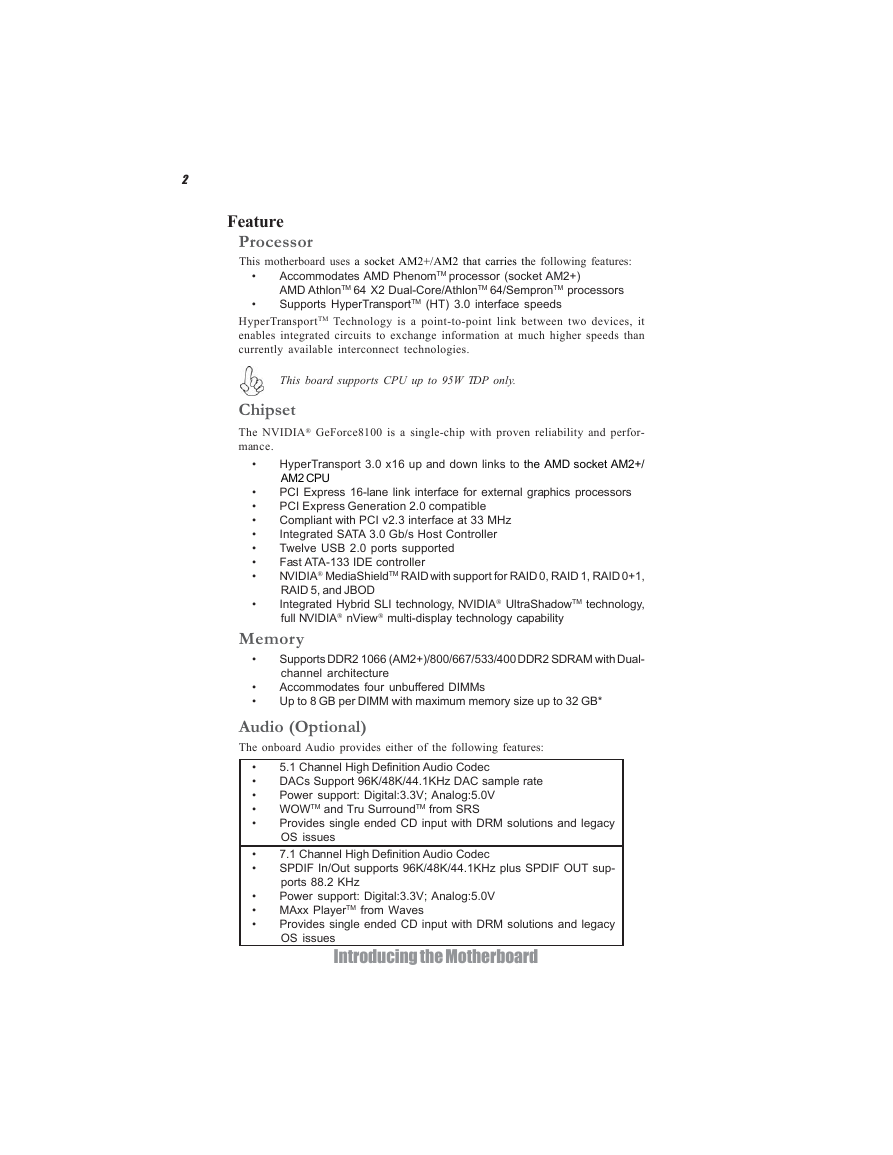








 2023年江西萍乡中考道德与法治真题及答案.doc
2023年江西萍乡中考道德与法治真题及答案.doc 2012年重庆南川中考生物真题及答案.doc
2012年重庆南川中考生物真题及答案.doc 2013年江西师范大学地理学综合及文艺理论基础考研真题.doc
2013年江西师范大学地理学综合及文艺理论基础考研真题.doc 2020年四川甘孜小升初语文真题及答案I卷.doc
2020年四川甘孜小升初语文真题及答案I卷.doc 2020年注册岩土工程师专业基础考试真题及答案.doc
2020年注册岩土工程师专业基础考试真题及答案.doc 2023-2024学年福建省厦门市九年级上学期数学月考试题及答案.doc
2023-2024学年福建省厦门市九年级上学期数学月考试题及答案.doc 2021-2022学年辽宁省沈阳市大东区九年级上学期语文期末试题及答案.doc
2021-2022学年辽宁省沈阳市大东区九年级上学期语文期末试题及答案.doc 2022-2023学年北京东城区初三第一学期物理期末试卷及答案.doc
2022-2023学年北京东城区初三第一学期物理期末试卷及答案.doc 2018上半年江西教师资格初中地理学科知识与教学能力真题及答案.doc
2018上半年江西教师资格初中地理学科知识与教学能力真题及答案.doc 2012年河北国家公务员申论考试真题及答案-省级.doc
2012年河北国家公务员申论考试真题及答案-省级.doc 2020-2021学年江苏省扬州市江都区邵樊片九年级上学期数学第一次质量检测试题及答案.doc
2020-2021学年江苏省扬州市江都区邵樊片九年级上学期数学第一次质量检测试题及答案.doc 2022下半年黑龙江教师资格证中学综合素质真题及答案.doc
2022下半年黑龙江教师资格证中学综合素质真题及答案.doc